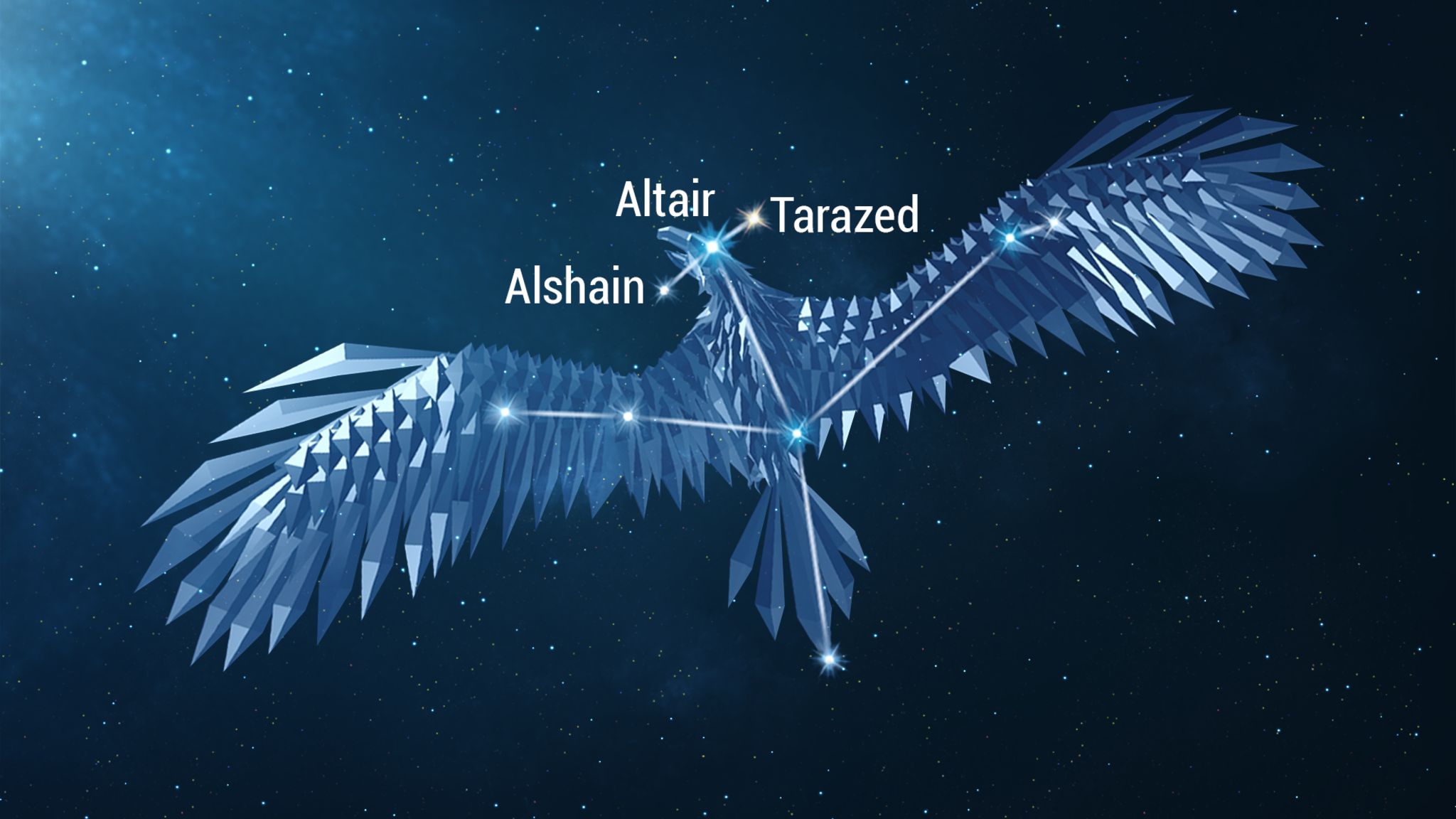Aquila the Eagle
Look halfway up the southeastern sky in early August evenings, and you’ll easily spot the bright, white star Altair, sitting at the bottom corner of the Summer Triangle asterism. Altair is the brightest star in the venerable constellation of Aquila (the Eagle) and marks the great bird’s head. The eagle’s body and tail extend downwards to the right, more or less following the Milky Way. The wings extend upwards and downwards.
Altair is Arabic for “flying eagle”. The star itself is a yellow-white star about ten times larger than our Sun, and only a mere 17 light-years away, making it the twelfth brightest star in the night sky. At 10 hours, its rotation rate is one of the fastest known, spinning so rapidly that the star has an oblate shape (wider at the equator than it is tall). In the sky, Altair is symmetrically flanked by two small stars named Alshain and Tarazed. The trio span about three finger widths, or 5° of separation. Tarazed is a cool, orange giant star located 460 light-years away and shining at almost 3,000 times the luminosity of our Sun.
The rest of Aquila’s stars are dimmer, but nonetheless visible to unaided eyes. Almost a fist’s diameter to the lower right of Altair is the star Delta Aquilae, representing the body. The wings are each about a fist diameter in length. The upper wing has the star Okab at the tip. The lower wing is formed by two widely spaced stars named Almizan I and Almizan II. The eagle’s tail is marked by a pair of small stars a finger’s width apart. The brighter tail star is named Al Thalimain “the two ostriches”.
Sweep your binoculars though the area around Aquila to see an abundance of stars from the nearby galactic plane. Our Star Walk 2 app will help you to identify all these objects in the night sky.
Good hunting!
